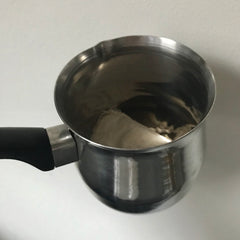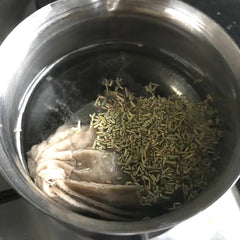⦁ Mild and gentle cleansing
⦁ Environmentally friendly and biodegradable
⦁ Suitable for sensitive skin and people with allergies
⦁ From renewable sources
⦁ Zero Waste
What is a soap nut?
A soap nut is literally a nut… that turns to soap!Where do soap nuts come from?
Soap nuts actually grow on trees! They are native to India and Nepal, where they have been used in numerous wonderful ways for hundreds of years. Soap nuts have grown to be a popular alternative to traditional washing detergents, shampoos and cleansers as they are better for the environment and for your skin.
How do soap nuts work?
Do soap nuts really work? YES!The fruits themselves are collected and sun-dried to become quite firm and brittle. Afterward the inner pit is shucked from their outer shells, because the shell is the part which holds the soap. When mixed with water, the nuts produce a foamy liquid, known as saponin, which is a natural soap. Saponin leaves your skin, hair or clothes squeaky clean, just like any other cleanser, but are completely biodegradable, eco-friendly and zero waste!
They can be placed in a cotton bag and put into the drum of your washing machine, or boiled to create shampoos and washes, and best of all - they can be reused up to FOUR times!
Oliver's Soap Nuts Recipes
I personally use soap nuts for laundry, surface cleaning and even as a hair and body wash! They are naturally mild and hypoallergenic, so therefore kinder to eczema-prone skin and those that suffer with dermatitis/psoriasis. This natural non-toxic cleansing agent is also water softening, which is great news for those in hard water areas, who like me might struggle with buildup and a waxy residue on hair strands.
DIY: How to Make a Hair and Body Wash with Soap Nuts
To make your own shampoo and bodywash using soap nuts, you’ll need:
1 medium sized pan or boiling pot
4-8 soapnut shells
1 tsp dried rosemary
4-6 drops of tea tree essential oil
1 small drawstring bag
METHOD
Step 1. Fill your drawstring bag with the desired amount of soapnut shell pieces. After a couple of uses you will be able to tell how many you need to adequately cleanse, I find that 6 is a good amount for the water quality in London.


Step 2. Fill your pot with cold tap water (filtered is even better) and drop in your soapnut bag. I use a tea/coffee boiling aluminium pot which I find is just the right size for the amount of solution I feel like I need for longer hair (this equates to around 500ml).


Step 3. Set this on the hob on a medium to high setting and let this come to the boil which I find can take between 7-10 minutes.

Step 4. Add in the dried rosemary so it has chance to expel its antioxidants and minerals into the solution as it begins to boil. I choose to use rosemary as it seems to help clarify and is said to aid in healthy hair growth/turnover and strengthening.


Step 5. You will see the solution begin to bubble and foam on the top, though don't let this boil over. Turn off the heat/gas and let it sit and settle until cool, which may take only 15 minutes or so but you can prepare this the night before a morning wash and leave it out on the counter covered or in the fridge in the same fashion.


Step 6. While the solution is still warm, I like to stir in a few drops of tea tree essential oil for its antimicrobial properties and to keep the scalp clear and and clean.

Step 7. Decant the solution into a vessel of your choosing. Choose one that best suits the way you'd like to apply the mixture to your hair which could be a spray bottle which works really nicely when separating the hair into sections before massaging it in. I often use a mason jar to pour it on and massage.

Step 8. Hop in the bath/shower and get your hair and scalp drenched in your solution. Be aware, it will be initially foamy during the boiling stage but there isn't much (if any) produced while applying it (this is the release of the saponins which are then concentrated in the water itself). Let that sit for 3-5 minutes so it has chance to lift away micro-debris and sebum and then rinse as you would normally.
Step 9 (optional). For an added clarification/conditioning boost, you can use a diluted apple cider vinegar rinse but I don't find the need when using added extras like essential oils and dried herbs. Soapnuts aren't harsh detergents so should cleanse effectively while also helping to balance the scalps natural pH.

Buy soap nuts here, from £2.50
DIY: How to Make a Clarifying Scalp Scrub with Soap Nuts
To make your own scalp scrub using soap nuts, you’ll need:
A measuring jug or kilner jar20g Soapnut powder
Apple Cider Vinegar
A pinch of sea salt (optional)
METHOD
Combine equal part soapnut powder and a liquid (apple cider vinegar workers really well as a conditioner and helps combat any dryness though water will still work). Optional ingredients include could include a pinch of fine sea salt or Himalayan pink salt for an extra manual exfoliation and a couple of drops of preferred essential oils. These you can do more research into to find out which ones could work best for a specific issue you want to target.
Simply work this paste into your hair but concentrate on the scalp. To avoid breakage and tangling, apply only a light pressure in circular movements.
Rinsing as usual will typically get all scrub out but if you feel residue or grit left in the hair, go ahead and use your normal shampoo or soapnut solution.
DIY: How to wash clothes with Soap Nuts
Make your own laundry detergent
You’ll need:
1 drawstring cotton bag
8 soap nut shells
1 washing machine!
2-3 drops of essential oil (optional)
METHOD
This requires a very similar preparation using the soap nut bag which can just be thrown into the washing machine drum and works effectively even on a 20/30 degree wash. It will leave you clothes completely unscented but if you miss a fragrance, a citrusy essential oil like lemongrass or mandarin add a nice fresh scent when applied to the bag washing. Alternatively you can use the same bag filled with soapnut powder which can provide a very similar result.
How to make washing up liquid with Soap Nuts
Make your own dish washing liquid
METHOD
Following the normal preparation steps, you can decant the solution into a spray bottle and can be stored in the fridge between uses. Where dried herbs may not be necessary, you could add in an antimicrobial essential oil like lavender which is also gives off a pleasing aroma if it lingers on your countertops or cookware. If making a batch of solution is too time consuming, a teaspoon of soapnut powder can easily be added to a washing up bowl or straight onto work surfaces which lathers lightly when scrubbed with.
After you’re done...
Soap nuts are from nature, so can be returned to nature after you've used them. The berries can be used 3 to 4 times and still be effective cleansers, but not in the case of the powdered form. They biodegrade quickly in your bin or ideally compost, so are very environmentally friendly and often package free or available from some online retailers in bulk in brown paper which can also be composted when you're finished. A guilt free and natural way of cleaning!Soap nuts are available in the zero waste section of our website, alternatively come and fill up your own container at our Brixton store.
All the best with your soap nut journey, and feel free to let me know how it's going and what uses you have discovered them for!
Oliver
History of Soap Nuts
There are around five to ten species of what is known as Sapindaceae, an extension of the Lychee family, which thrive in warmer and tropical climes. As both evergreen and deciduous (term means to shed at maturity) kinds of tree, they typically produce what we commonly refer to in the West as 'soap nuts' or 'soap berries'(1). This is derived from its original Latin name Sapindus, 'sapo' meaning soap and 'indicus' meaning 'of India'(2). These natural fruits contain saponins which bare surfactant (foaming) properties, for which ancient Asian cultures and some Native Americans have utilised for cleansing everything from clothes, to hides to their own families (3). Another such natural saponin-producing plant is the Yucca root.

